The automotive headlight system has evolved into a mandatory and indispensable feature on modern vehicles. Today, there are four types of headlights, with halogen, xenon (HID), and LED being the most common, while laser lights are reserved for select premium models.

Headlights are an essential component of modern automobiles. Image: The Drive
The primary function of headlights is to enhance visibility when driving in low-light conditions, such as at night or in foggy weather. Additionally, headlights enable drivers to detect oncoming traffic and signal vehicles traveling in the same direction.
Over time, automotive headlights may become misaligned. This can also occur when replacing headlight bulbs without proper adjustment.
Misaligned headlights can be a safety hazard when driving at night as they may dazzle oncoming drivers, causing distraction and increasing the risk of traffic accidents. Therefore, proper headlight alignment is the only solution to address these issues.
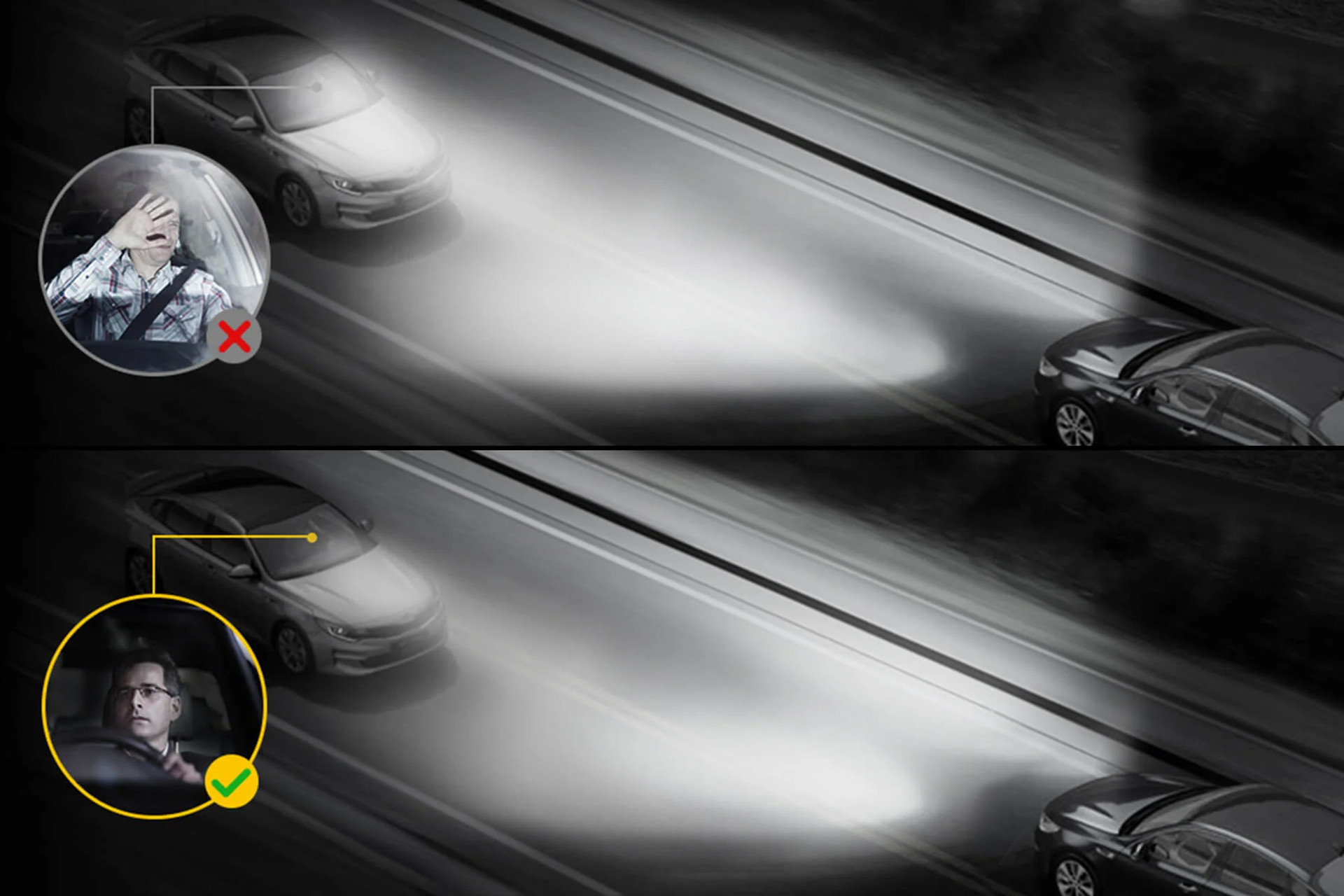
Misaligned headlights can cause glare for oncoming drivers. Image: Auxito
In reality, adjusting headlights is relatively straightforward, and car owners can easily perform this task without visiting a professional auto repair center.
1. Balance the Vehicle
Firstly, find a spacious area to park your car on a level surface, ensuring it is not loaded with heavy cargo, as this will alter the headlight beam angle.
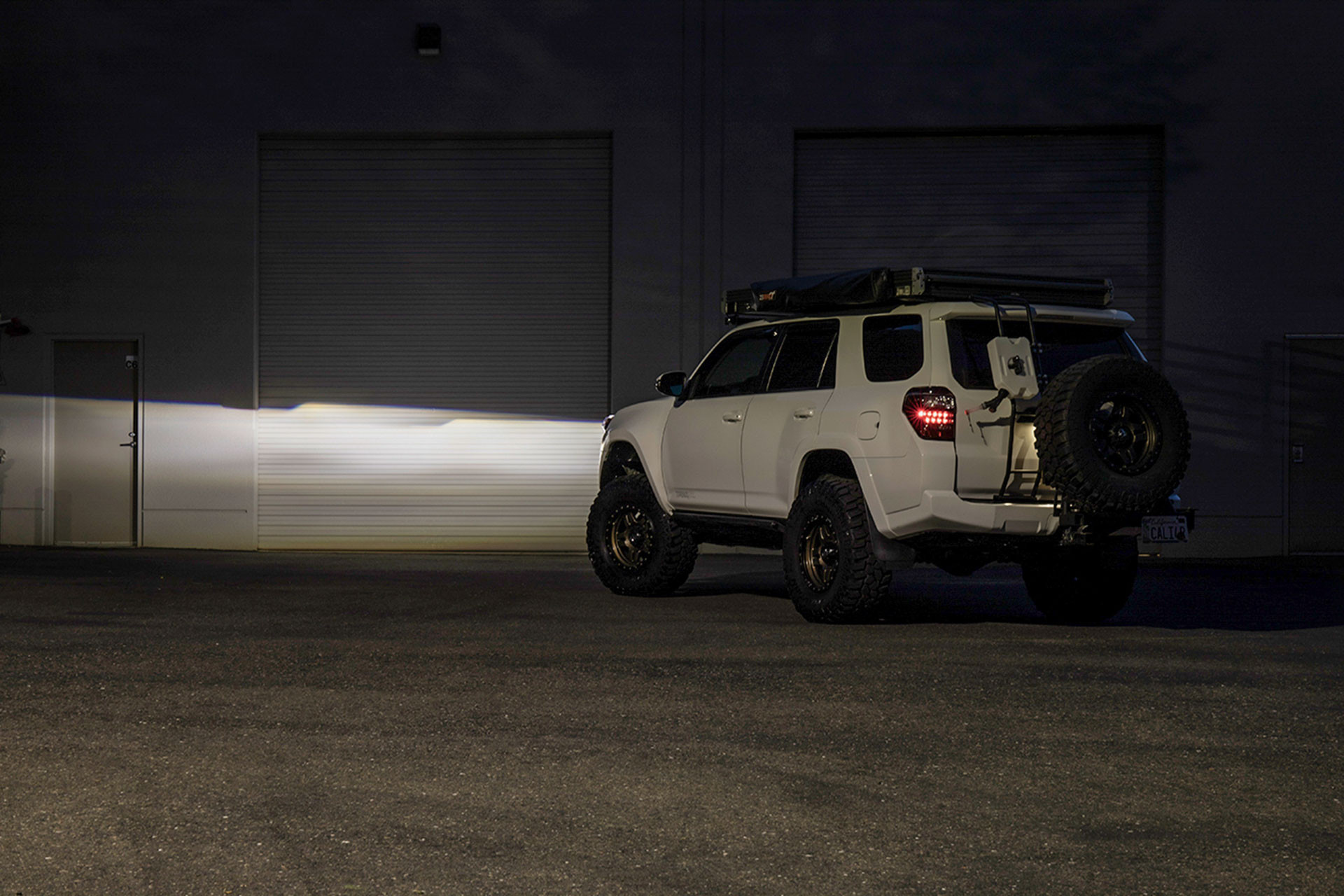
Park on a level surface for accurate measurements. Image: Trail4Runner
Additionally, check the tire pressure, as balanced tires are crucial for precise headlight beam adjustments.
2. Find a Wall
The necessary condition is to find a flat parking area, while the sufficient condition is to have a wall in front. The purpose is to project the headlights onto the wall to serve as a reference for alignment.
3. Clean the Headlights
Next, use a soft cloth to clean the outer surface of the headlights. This ensures that the light projection is clear, making it easier for you to observe and adjust the beam accurately.
4. Take Measurements
Once the car is positioned on a level surface, with the front end facing the wall, measure the height from the ground to the center of the headlights. Typically, this height will be approximately 3.3 to 3.6 feet.
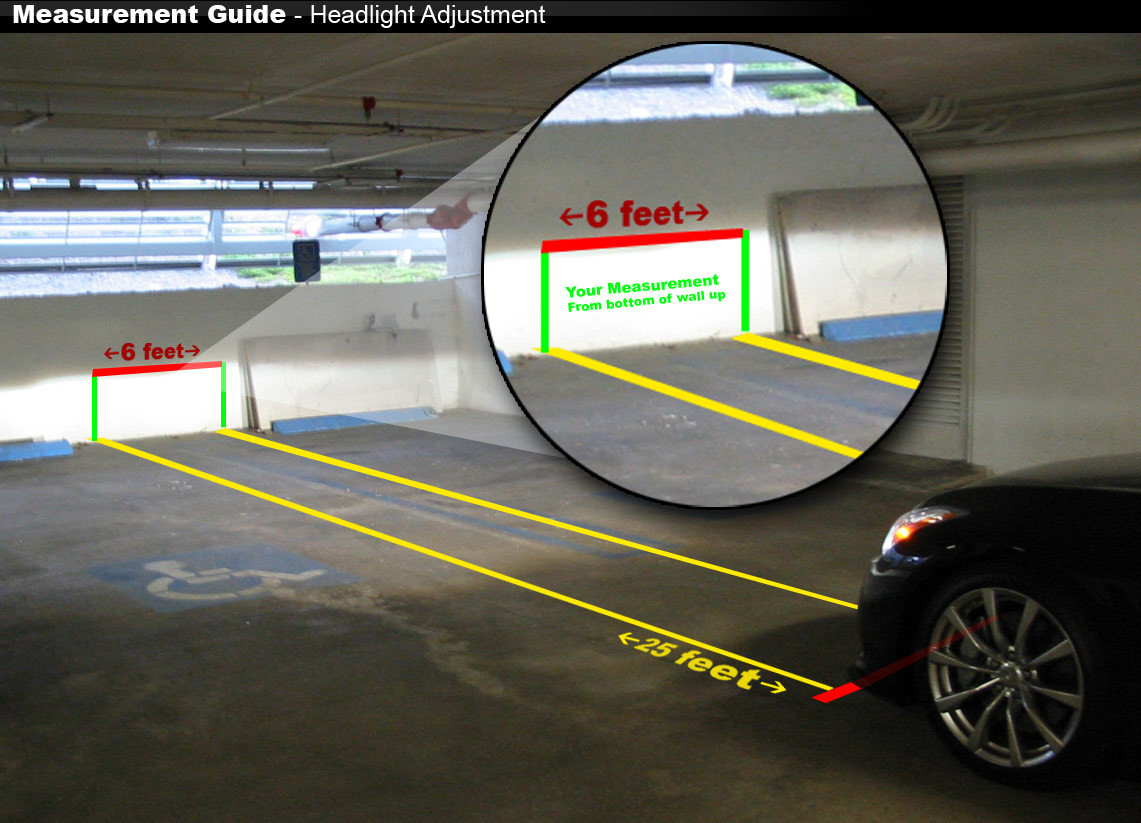
Maintain a distance of 16-23 feet from the wall for accurate adjustments. Image: AcuraZine
Then, using the measured height, mark the wall. Draw a horizontal line equivalent to the width of the car and a vertical line extending from the center of the headlights to the wall.
5. Adjust the Headlights
Get inside the car, start the engine, and turn on the headlights. Back the car up to a distance of 16-23 feet from the wall, open the hood, and begin adjusting each headlight. You will need a screwdriver and must locate the adjustment screws inside the engine compartment accurately. Typically, there are two screw-type adjusters behind each headlight assembly, allowing adjustments in four directions, indicated as U-D or L-R.
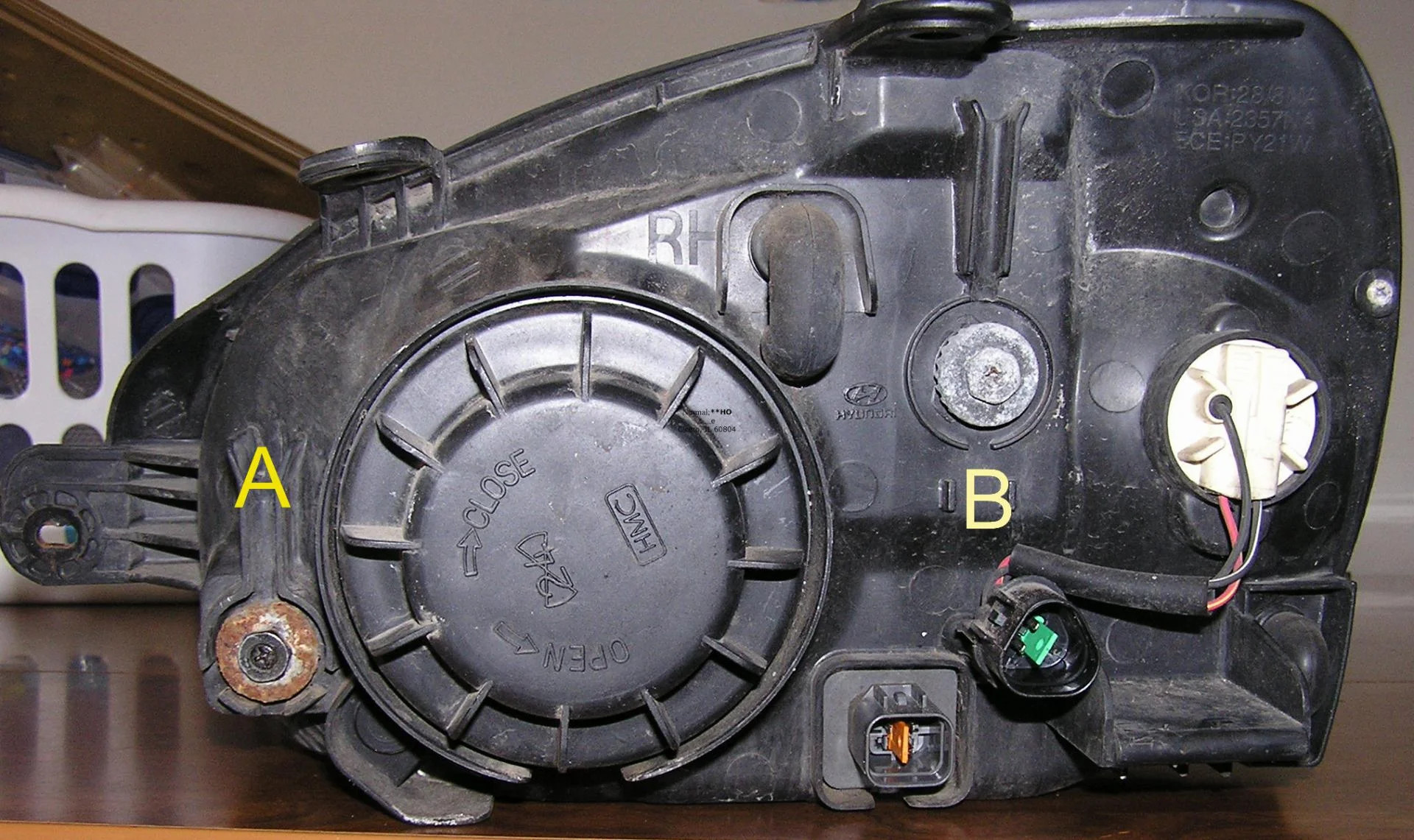
Headlight assemblies usually have two screws for adjusting the up-down and left-right angles. Image: Hyundai Forums
To adjust the headlights up or down, use the screwdriver to turn the U-D screw vertically, following the clockwise direction to raise the beam and counterclockwise to lower it. Adjust the height so that the peak of the beam is 1.2-2 inches lower than the horizontal line on the wall.
If the beam is misaligned from the intersection of the horizontal and vertical lines, adjust the beam left or right using the remaining screw (L-R) so that the intense portion of the headlight beam falls to the right of the vertical line.
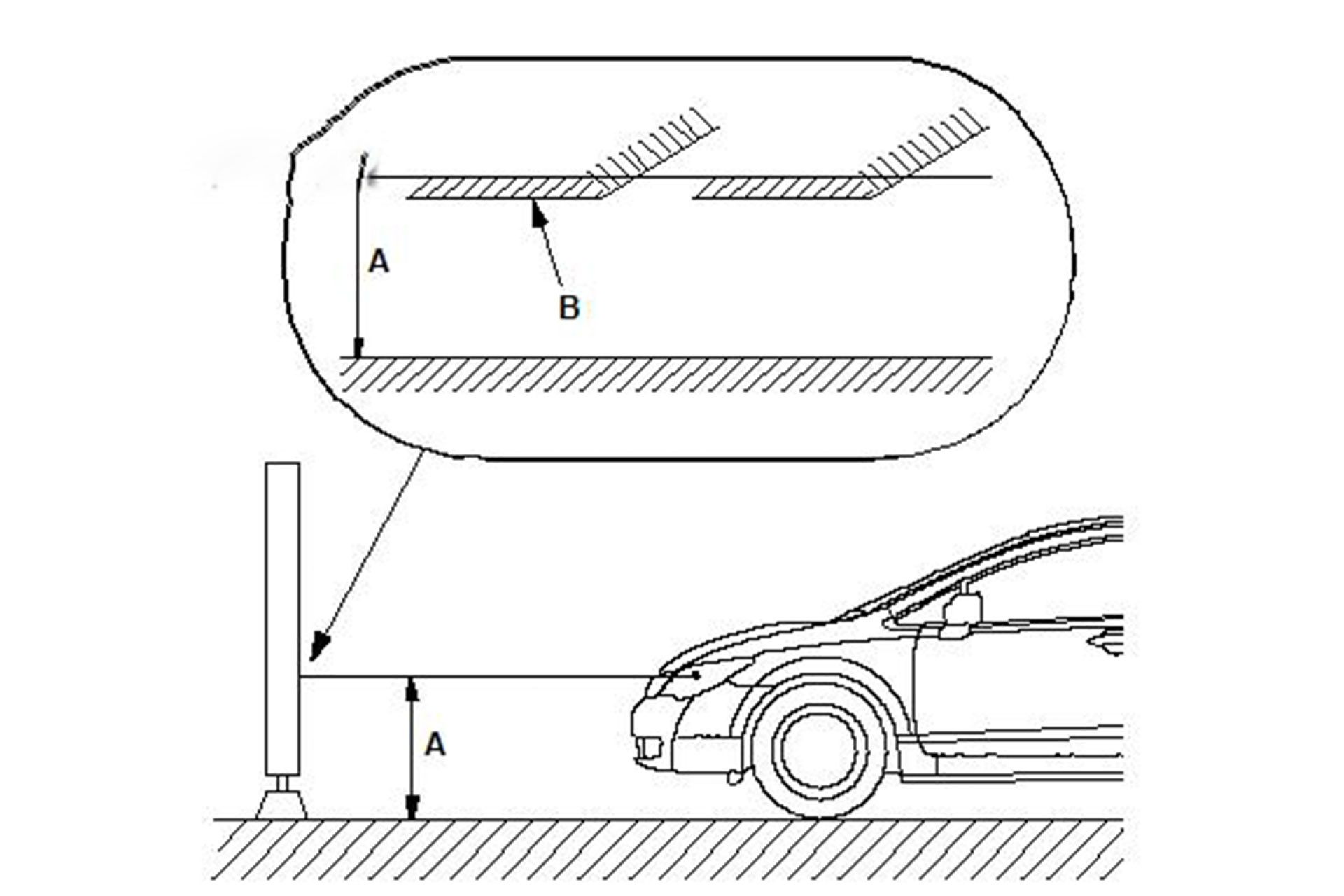
Ensure the beam (B) is 1.2-2 inches lower than the height of the headlight center (A). Illustration
After adjusting both headlights, observe if the beams are at the same height and converge at the same point. If they are, your headlight alignment is accurate.
Some Tips for Using Automotive Headlights
When using automotive headlights, drivers should keep in mind a few simple tips:
– Use headlights only when driving on highways, outskirts, or two-way roads with medians, as they provide better illumination and a wider field of vision.
– Use turn signals when overtaking or asking for directions instead of honking. Additionally, using headlights to signal instead of honking reduces noise pollution.
– If an oncoming vehicle flashes its high beams, check if your high beams are on. If so, reduce speed and switch to low beams to avoid dazzling oncoming drivers.
– In Vietnam, using high beams in urban areas and densely populated regions is illegal and subject to fines ranging from VND 800,000 to VND 1,000,000, according to Decree 100/2019/ND-CP.
– Finally, inspect your headlights annually to ensure they remain properly aligned.
According to VTC News

































